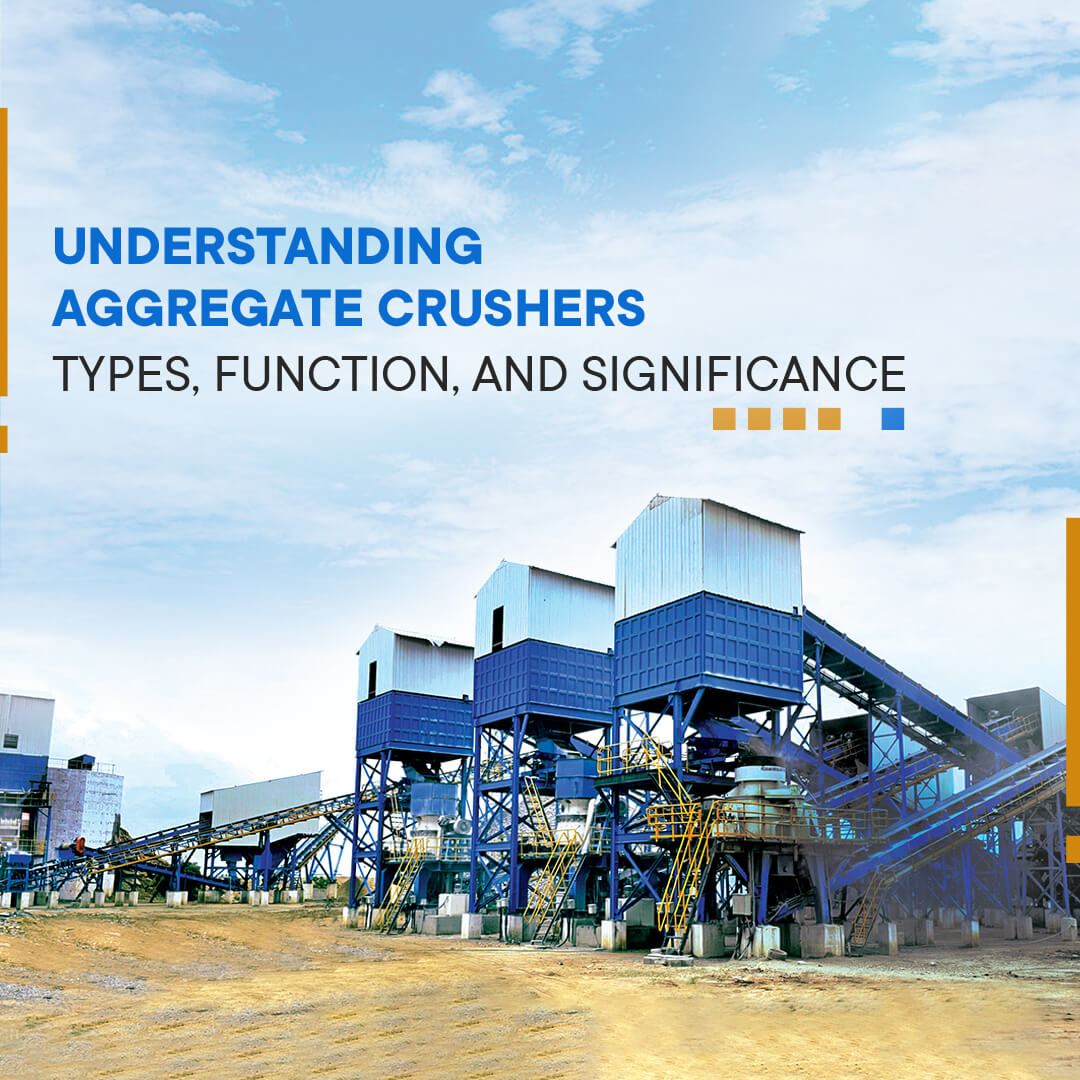Understanding Aggregate Crushers: Types, Function, and Significance
Blogs

Aggregate crushers play a key role in the construction industry because they break large rocks into smaller, more manageable sizes. These machines are indispensable in the production of various construction materials such as concrete, asphalt and road base. In this blog post, Puzzolana.com delves into the world of crushers and explores their types, functions and importance in construction projects.
Types of aggregate crushers
Aggregate crushers come in different forms, each of which is designed to efficiently solve specific tasks. The most common types of aggregate crushers are:
- Jaw crushers:These crushers use a fixed jaw plate and a movable jaw to reduce the size of the feed material. They are ideal for primary crushing.
- Impact Crushers: Impact Crushers use a high-speed rotor and hammers to hit the incoming material and break it into smaller pieces. They are suitable for both primary and secondary crushing.
- Cone crushers: Cone crushers are often used for secondary and tertiary crushing. They work by compressing material eccentrically between a rotating mantle and a stationary concave.
- VSI Crushers: Vertical Shaft Impactor (VSI) crushers use a high-speed anvil rotor that accelerates the aggregate and crushes it into cubic shapes. They are popular for producing good aggregates in good shape. Function and operation: Aggregate crushers are designed to handle huge rocks extracted from quarries or demolition sites. They perform the crucial task of reducing the size of these materials to facilitate transportation, increase efficiency and meet the requirements of construction projects. The operation of an aggregate crusher involves feeding the material into the machine via a vibrating feeder or conveyor belt. The type of crusher chosen determines the crushing mechanism. For example, jaw crushers apply pressure to break the material, while impact crushers use the principle of impact and friction. After the material is fed into the crusher, it passes through several stages of crushing depending on the desired output size. The crushed material can pass through several crushers to reach the desired size
Significance: Rock crushers are important in construction projects for several reasons
- Production of construction materials: Crushers break rocks and stones into smaller pieces, creating aggregates that are important in the production of concrete, asphalt and roadbed. These materials form the backbone of infrastructure projects such as buildings, roads and bridges
- Cost savings: By reducing the size of materials, crushers help to optimize transport costs, as smaller aggregates require less space and can be transported more efficiently.
- Versatility: Stone crushers can process a variety of materials including limestone, granite, basalt, and recycled concrete. This versatility allows contractors to use different aggregates for different construction applications.
- Quality control: Crushers ensure that aggregates meet the requirements of construction projects. This control of overall size and shape contributes to the overall quality and durability of the final building materials.
Conclusion
Aggregate crushers are essential equipment in the construction industry, enabling large rocks to be turned into smaller usable aggregates. They provide the necessary materials for the construction of infrastructure projects and play a vital role in optimizing transport costs and ensuring the quality of construction materials. By understanding the different types and functions of crushers, contractors and construction professionals can make informed decisions when choosing the right equipment for their projects.
View our expansive machinery
With Puzzolana, you have the chance to work with the brightest professionals in the field and be a part of our expanding global footprint. We are looking for motivated professionals to join our team.